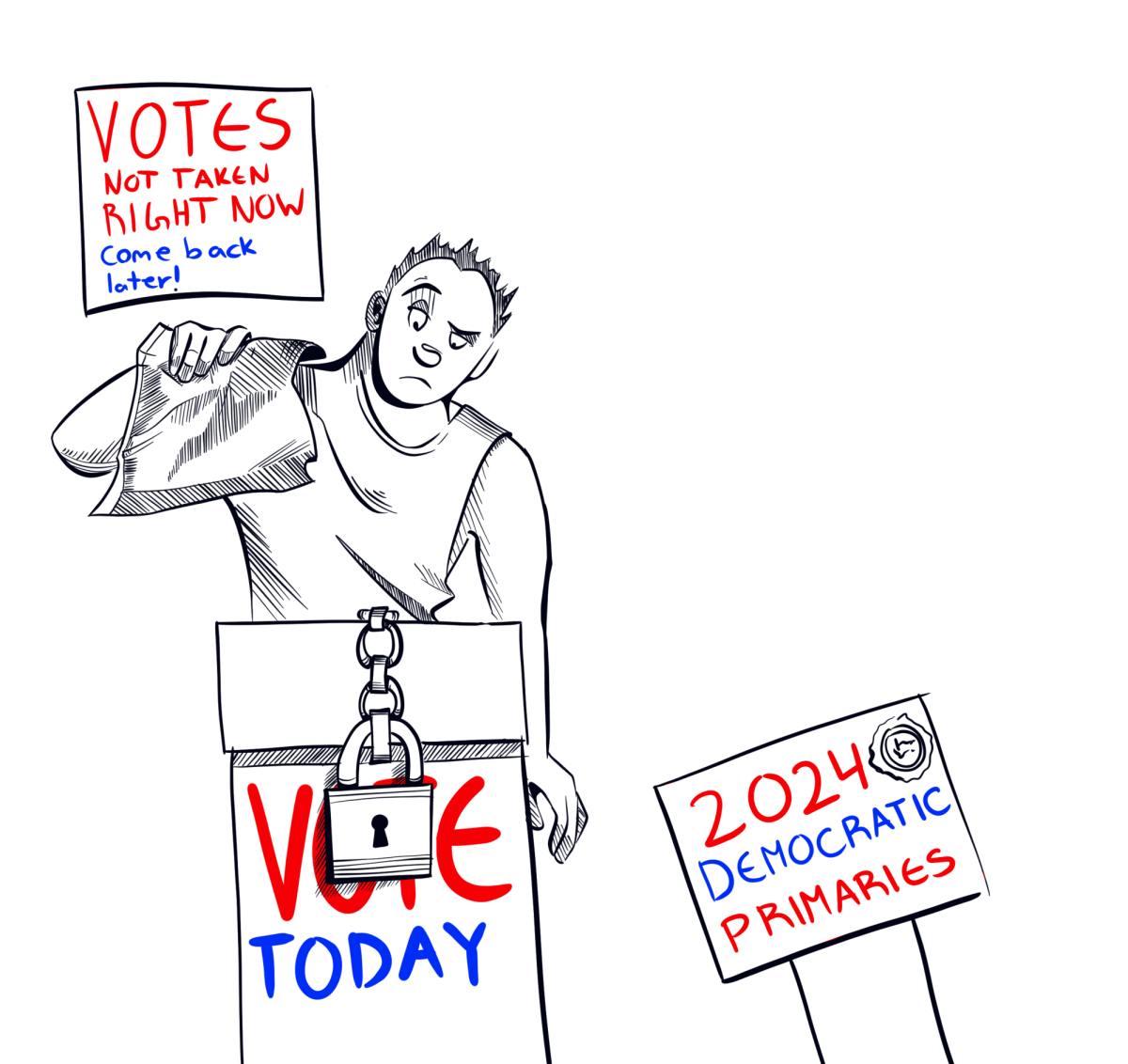“Whoa, Biden dropped out!” My mom exclaimed one evening after checking her phone as we were walking down the street.
Even though I expected President Joe Biden’s withdrawal from the race following his presidential debate against former President Donald Trump, when he eventually did drop out, it was a shock. Something so unprecedented had happened, but it was swept under the rug almost immediately as Biden endorsed Vice President Kamala Harris for president.
Even before the delegates had made their decision, people seemed to understand that Harris would be the one to replace Biden. I had heard whispers of other potential candidates, but many — including myself — were confident of Harris’ eventual nomination.
To secure a party’s nomination, candidates typically compete in state elections, known as primaries and caucuses, to secure delegates. These delegates then vote at their party’s national convention. The candidate who wins the most delegate votes becomes the party’s nominee, and can then move on to the general election.
Throughout American history, the method of nominating a party’s candidate has evolved, expanding the decision to more voters.
According to Reuters, delegates and nominees were originally chosen by party leaders, but this has changed. Newer party rules have shifted power away from the party leaders to the people. However, for the upcoming elections, these democratic changes did not hold.
After Biden’s late dropout, the delegates who had initially been pledged to Biden were free to support whichever candidate they wanted, and they chose Harris without going through primary state elections.
Given the timing of Biden’s dropout, there was not enough time to redo primaries and campaign for the nomination. According to Stanford political science professor David Brady, the Democratic party leaders considered other ways to replace Biden.
“They wanted them to get together a sort of small primary and put together [Josh] Shapiro and Harris and a couple others, and then have them debate and have them [the delegates] vote at the convention,” Brady said. “I think reason prevailed, and [Nancy] Pelosi and others made the argument that that was not going to work because it would be too divisive.”
Though other options, such as a drawn out debate, may have been more divisive, when the nominee was chosen by the delegates, it irritated me that the typical nomination process wasn’t followed.
Brady said the process of selecting Harris after Biden’s dropout was sensible despite being unprecedented.
“The Democrats have the right to do what they did,” Brady said. “It’s a little unusual, but then, if they had kept Biden, they would have lost, and that was the primary consideration of parties. They want to win.”
The Democratic Party leaders had to quickly find a replacement, and the delegates selected a candidate that represents the Democratic Party.
According to a survey conducted by The Associated Press, prior to Harris’ nomination, “about 8 in 10 Democrats say they would be somewhat or very satisfied if Harris became the Democratic nominee for president.” As Biden’s running mate, she was also the logical replacement for Biden, but it still doesn’t mean her selection was completely democratic.
Even if the Democrats have the right to do what they did, and chose the best replacement, a dangerous precedent may have been set for how nominees are chosen in the future. If a nominated candidate can be pressured to drop out by a party’s leaders if expected to lose, the purpose of the modern-day primary system is defeated.
Harris’ selection by these unbound delegates ignores the long-term party reforms that allowed our nomination process to become more democratic. Harris’ selection was undemocratic because she wasn’t chosen by “the people.” She became the Democratic nominee without passing through the gauntlet of primaries. As a result, Democrats are now being represented by a candidate they did not explicitly nominate.
Another problem with Harris’ nomination was the lack of competition she faced. If Biden had dropped out before the primaries, there could have been significant opposition, and a different nominee. Biden’s late dropout prevented other politicians from getting a share of the spotlight.
The majority of the blame for such an unprecedented scenario should be placed on Biden and his advisers, who decided to run for a second term despite indications during his 2020 presidential campaign that he would be a transitional figure.
“Look, I view myself as a bridge, not as anything else,” Biden said in a campaign rally in 2020 as he spoke about leading America into the future.
Instead of ushering in a new era of youth in politics, which is severely lacking in our government, Biden chose to campaign for a second term, stagnating potential progress. He was already the oldest president in United States history, and he should have realized that at 81 years old, his time had passed.
In the end, while I am not happy with how she was selected, I do believe that Harris is a better option than Biden and was the best replacement to help bring the Democratic Party forward.
In a perfect world, Biden would have dropped out sooner, but that’s not the reality we live in. Instead, we should look to the future and see if there are better ways to replace candidates who have dropped out.




